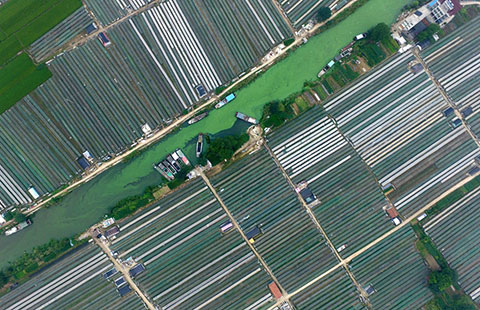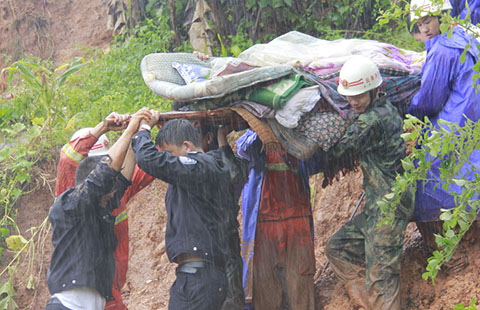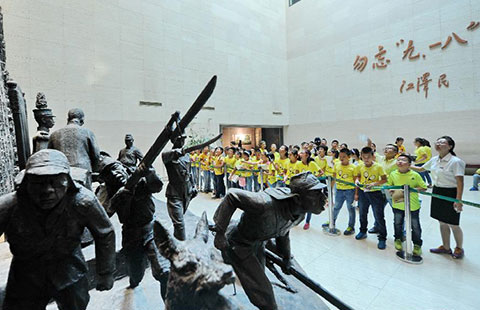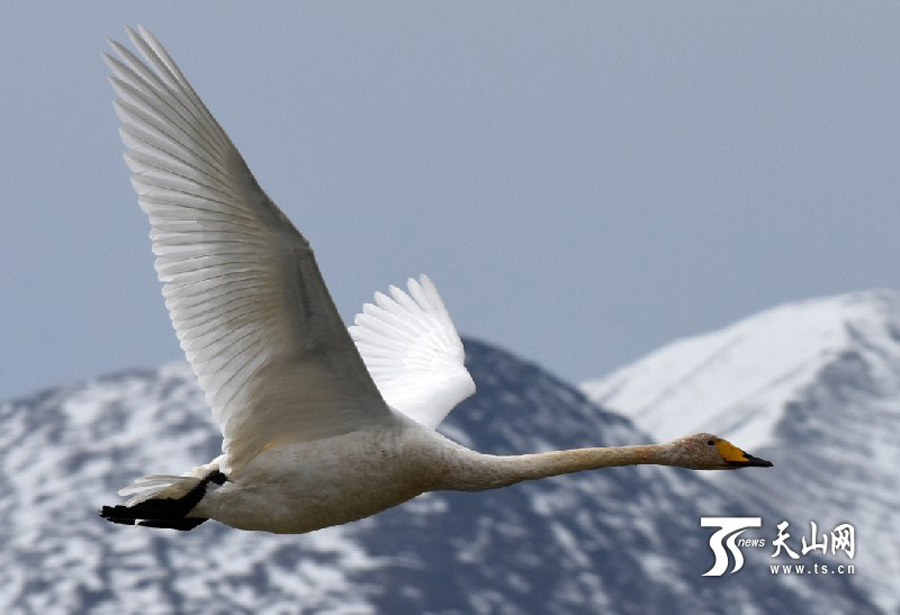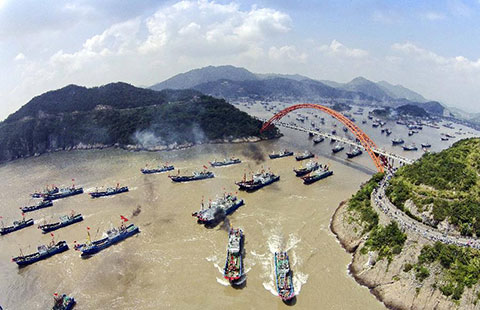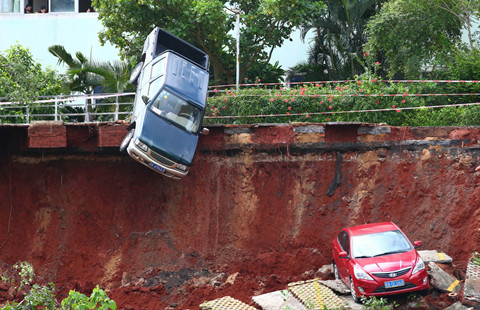

|
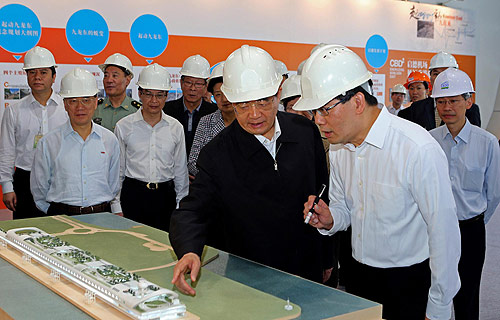 |
| Chinese President Hu Jintao points at a model of Hong Kong's Kai Tak Development (KTD) project,June 30, 2012. [Photo/Xinhua] |
|
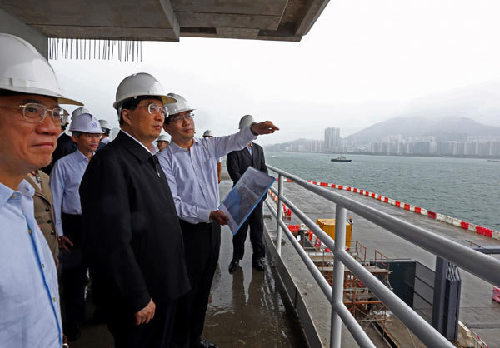 Chinese President Hu Jintao visits the site of Hong Kong's Kai Tak Development (KTD) project Saturday morning accompanied by outgoing Chief Executive Donald Tsang Yam-kuen and other high-ranking officials.[Photo/Xinhua]
|
Hu toured the Kai Tak cruise terminal under construction and viewed the models of the terminal and the Kowloon East development zone before heading to the nearby construction site of the Kai Tak public housing scheme to learn about its progress.
Hu said he felt very pleased to visit Hong Kong after his last trip five years ago, and hoped to visit places "as many as possible" in order to know about the latest development and progress, and have a better understanding of the local residents' life and expectations.
The KTD project is one of the major infrastructure construction projects in the city, which is designed to meet the demand for boosting Hong Kong's economic development and improving the people 's livelihood and environmental protection, he said.
"It is a very significant project," Hu said, stressing that the progress and quality of the project must be guaranteed, while greater attention should be given to workplace safety.
Hu, also general secretary of the Central Committee of the Communist Party of China and chairman of the Central Military Commission, arrived here Friday to attend celebrations marking the 15th anniversary of Hong Kong's return to China and the swearing- in ceremony of the new government of the special administrative region.
Kai Tak Development is a huge and highly complex development project spanning a total area of over 320 hectares covering the site of the former Kai Tak International Airport and the adjoining hinterland districts of Kowloon City, Wong Tai Sin and Kwun Tong to the north of the Hong Kong Island.
The project was launched in 2009 and is expected to take about 12 years with an estimated total investment of 130 billion Hong Kong dollars (16.76 billion U.S. dollars).
Upon completion, major infrastructure facilities including a cruise terminal, public rental housing, the Shatin-to-Central Link of the local railway, a multi-purpose stadium complex, a metro park and hospitals, will be put into use, making it a new landmark fronting the Victoria Harbor.


